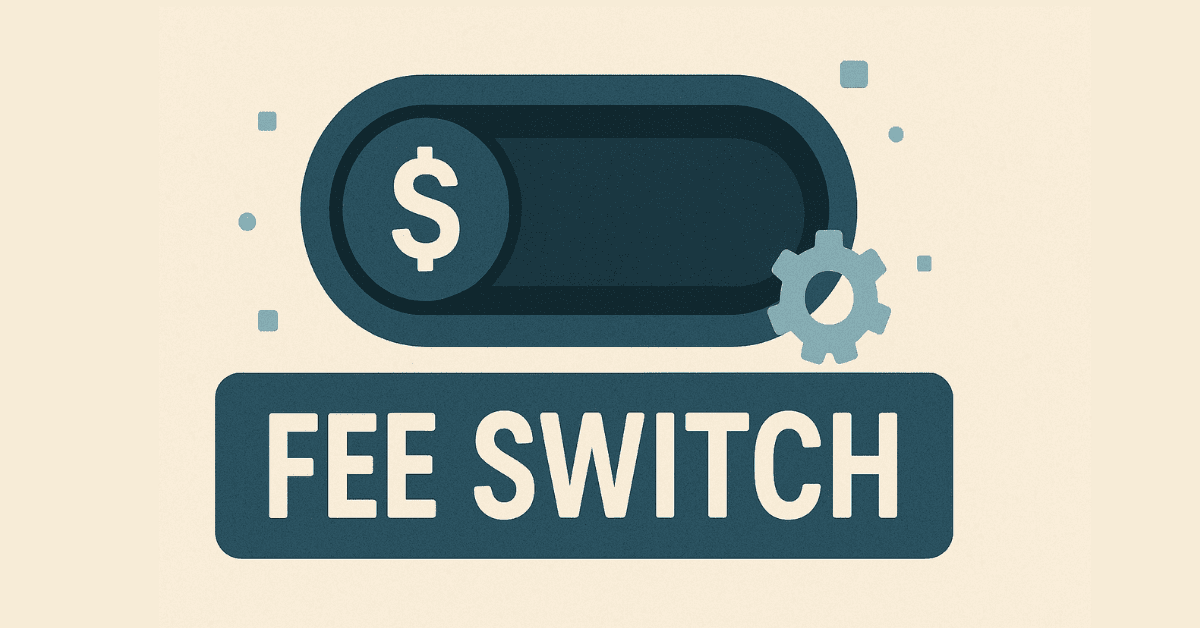
Fee Switch: "The Key" to Unlocking Revenue for Holders?
Fee Switch is a mechanism designed for protocols to redistribute a portion of their revenue to token holders. To activate this mechanism, the project needs to receive approval from the community through a governance vote.
1. Operating Process of Fee Switch
The implementation of the fee switch mechanism typically involves the following main steps:
-Proposal: A detailed proposal will be presented on the project's forum. The proposal outlines the reason for implementing the fee switch, the revenue sharing percentage, and the type of asset to be used for rewards (which could be stablecoins, project tokens, etc.).
-Discussion: The community will have a period, typically between 2 to 7 days, to discuss and provide feedback on the proposal.
-Voting: After the discussion period ends, an official vote will be held on governance platforms such as Snapshot or Tally for the community to decide whether to approve or reject the proposal.
-Staking and Rewards: If the proposal is approved, users can participate in staking the platform's tokens to start receiving a share of the distributed revenue.
2. Key Benefits
- Increased Token Value: When a token generates real revenue, it becomes more attractive to investors.
-Inflation Control: Revenue sharing creates an incentive to hold tokens, helping to reduce selling pressure in the market.
-Building a Loyal Community: Users who directly benefit from the project's growth are more likely to remain engaged long-term.
3. Risks and Limitations
-Legal Risks: The revenue-sharing mechanism could cause tokens to be considered as securities, leading to complex legal issues.
-Conflict of Interest: A fair revenue distribution structure is necessary to avoid conflicts among stakeholders, such as the development team, users, and liquidity providers.
-Budget Shortages: Sharing revenue may reduce funds available for future product development and research.
4. Background
The fee switch mechanism started gaining attention during the decentralized finance (DeFi) boom from 2020 to 2022. Many projects were generating significant revenue, but the value of their tokens did not increase proportionally. Uniswap was one of the pioneering projects to propose this idea, though it failed in the first governance vote.
5. Notable Projects
Several projects are currently considering and implementing the fee switch:
-Ethena (ENA): Has officially passed the proposal and is preparing for implementation.
-Blur (BLUR): The community is actively discussing the activation of this mechanism.
Other projects expected to adopt the fee switch in the near future include Aave (AAVE), LayerZero (ZRO), EigenLayer (EIGEN), Raydium (RAY), among others.
6. Key Considerations
The fee switch is a powerful tool but also very complex. To implement it successfully, a project needs to ensure it has a stable business model, a high-quality product, and a balanced, fair revenue-sharing ratio that harmonizes the interests of all parties involved.